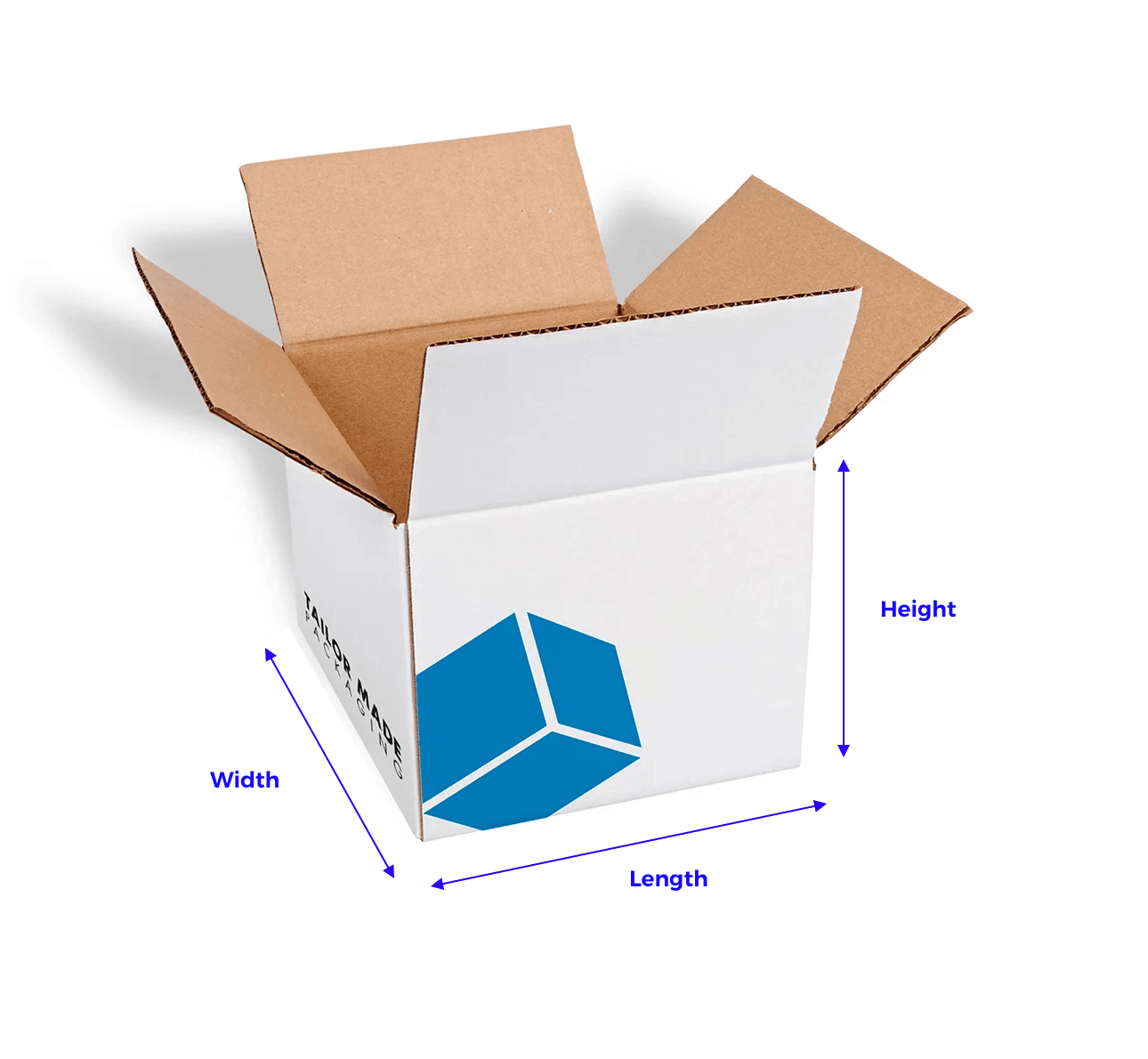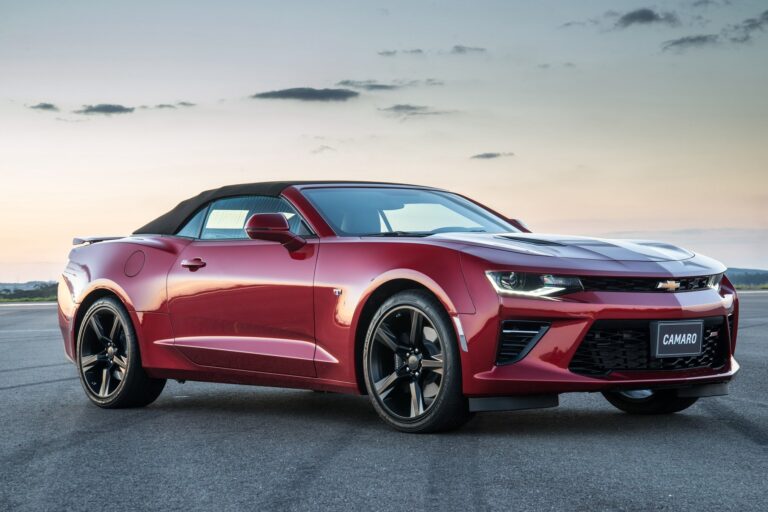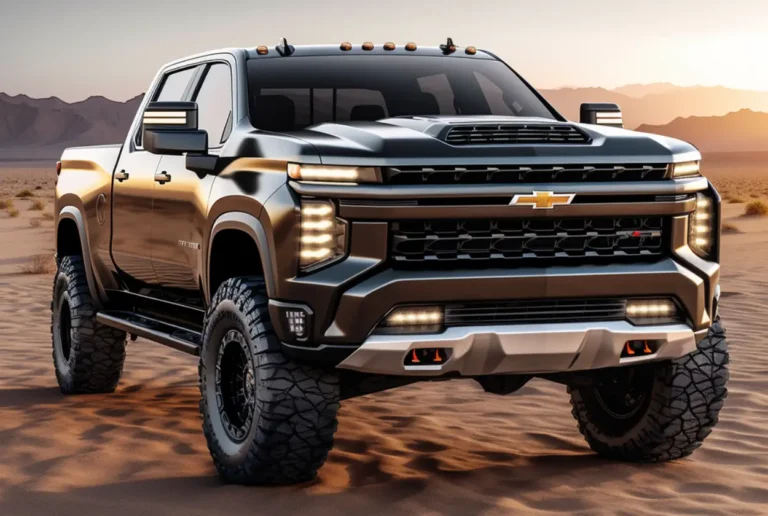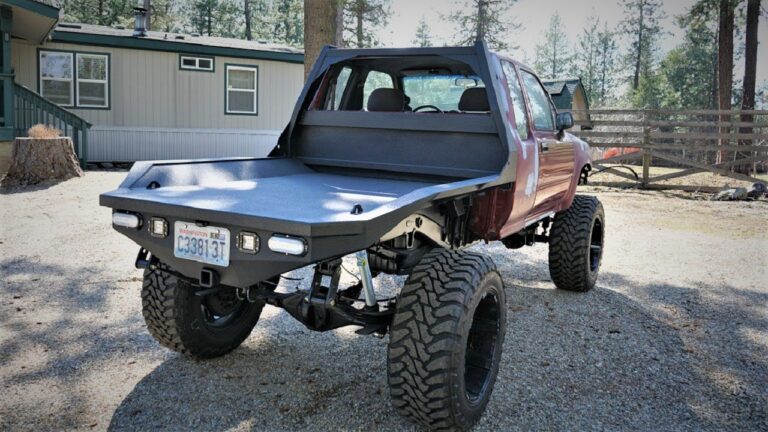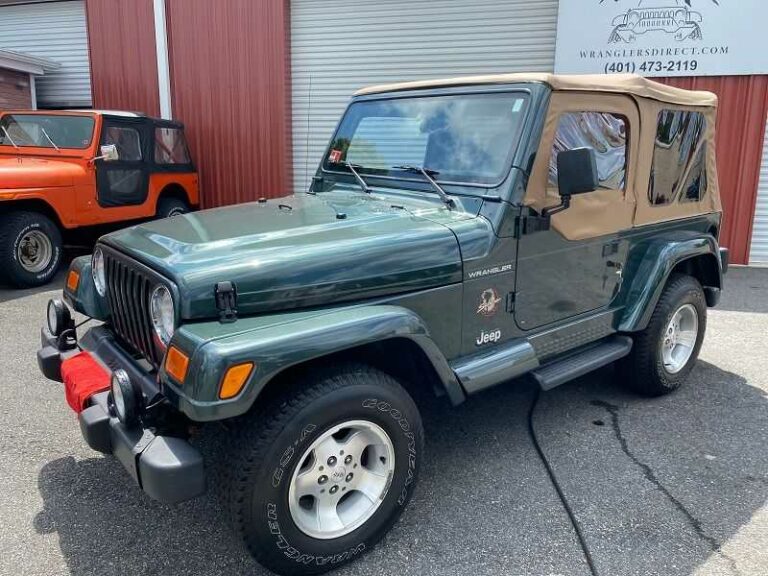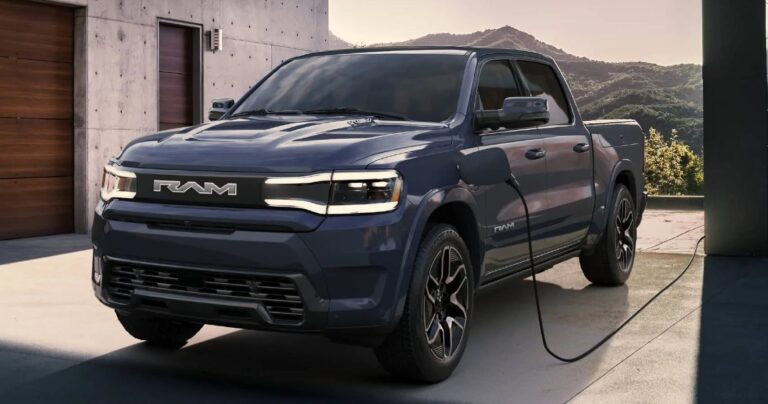Box Truck Height: The Definitive Guide to Measurement, Safety, and Compliance
Box Truck Height: The Definitive Guide to Measurement, Safety, and Compliance cars.truckstrend.com
In the vast ecosystem of commercial transportation, the box truck stands as a versatile workhorse, indispensable for everything from local deliveries and parcel services to residential moves and specialized logistics. Its enclosed, rectangular cargo area, mounted on a truck chassis, makes it ideal for transporting a wide array of goods, protected from the elements. However, beneath its seemingly straightforward design lies a critical dimension that dictates its operational parameters, legal compliance, and most importantly, safety: Box Truck Height.
Understanding box truck height is far more than just knowing a number; it’s about safeguarding lives, preventing costly damage, ensuring efficient operations, and adhering to strict regulatory frameworks. An oversight of even a few inches can lead to catastrophic bridge strikes, entanglement with overhead utilities, or the inability to access loading docks or delivery locations. This comprehensive guide will delve into every facet of box truck height, from its fundamental definition and measurement to its profound implications for drivers, fleet managers, and anyone involved in the logistics chain.
Box Truck Height: The Definitive Guide to Measurement, Safety, and Compliance
What Defines Box Truck Height? Components and Measurement
At its core, box truck height refers to the vertical distance from the ground to the highest point of the truck. While this sounds simple, the actual measurement can be influenced by several factors, making precision paramount.
Key Components Contributing to Overall Height:
- Chassis and Suspension: The foundational structure of the truck, including the frame and suspension system, sets the basic ground clearance and platform height for the cargo box.
- Cargo Box (Body): This is the primary determinant of height. Box truck bodies come in various dimensions (length, width, height), with the height of the box itself being a significant factor.
- Tires: The size and inflation pressure of the tires directly impact the overall height. Under-inflated tires can slightly reduce height, while oversized tires can increase it.
- Roof-Mounted Equipment: Many box trucks are equipped with additional features on the roof that add to their total height. Common examples include:

- Refrigeration Units (Reefers): These large, often bulky units are mounted on the front top of the box for temperature-controlled transport.
- Air Conditioning Units: For driver comfort or specialized cargo areas.
- Aerodynamic Fairings/Spoilers: Designed to reduce drag, these can add several inches to the top of the cab or the front of the box.
- Antennas, GPS Receivers, Satellite Dishes: While seemingly small, these can be the highest point on some vehicles.
- Emergency Lights/Beacons: Often seen on utility or service box trucks.

- Liftgates (in raised position): While liftgates are typically at the rear and fold down, some models, when fully raised for travel, might extend above the roofline, particularly if they are integrated or specifically designed for certain cargo. It’s crucial to confirm this.
- Cargo Load (Suspension Sag): A heavily loaded box truck will experience suspension compression, which can slightly decrease the overall height. Conversely, an empty truck might ride higher. It’s vital to know the maximum operational height, which usually occurs when the truck is empty or lightly loaded, as this represents its tallest profile.

Accurate measurement must account for the absolute highest point of the vehicle, regardless of what component creates it. This is the number that matters for clearance purposes.
Why Box Truck Height Matters: The Critical Implications
The seemingly innocuous dimension of box truck height carries profound implications across multiple facets of transportation:
1. Safety: Avoiding Catastrophic Collisions
The most immediate and severe consequence of misjudging box truck height is the risk of striking overhead obstacles. Bridges, tunnels, overpasses, low-hanging utility lines, traffic lights, and even tree branches can become dangerous hazards. A bridge strike can lead to:
- Severe Vehicle Damage: Crushing the top of the box, ripping off equipment, or even compromising the structural integrity of the truck.
- Infrastructure Damage: Significant damage to bridges, potentially leading to closures, costly repairs, and traffic disruptions.
- Serious Injuries or Fatalities: For the driver, occupants, or even bystanders, a high-speed impact with an immovable object can be deadly.
- Cargo Loss/Damage: Contents of the truck can be destroyed or scattered.
2. Legality and Regulations: Staying Compliant
Every state and jurisdiction has legal maximum height limits for commercial vehicles operating on public roads. While there can be variations, the most common federal standard is 13 feet, 6 inches (13’6") in the contiguous United States, though some states permit up to 14 feet. Exceeding these limits without a special permit for an "oversized load" can result in:
- Hefty Fines: Penalties for non-compliance are substantial and can vary widely by state.
- Impoundment: The vehicle may be impounded until the issue is resolved or a permit is obtained.
- Insurance Complications: Non-compliance can void insurance coverage in the event of an incident.
- Operational Delays: Time lost dealing with law enforcement, re-routing, or obtaining permits.
3. Operational Efficiency: Smooth Logistics
Knowing the precise height of your box truck is crucial for seamless operations:
- Route Planning: Drivers and dispatchers must plan routes that avoid low-clearance areas. Truck-specific GPS systems are invaluable tools for this.
- Loading Docks and Warehouse Doors: Many facilities have specific height restrictions for their bay doors. An improperly sized truck can be unable to load or unload, leading to significant delays and rerouting.
- Parking and Garages: Access to multi-story parking garages, covered loading areas, or even some residential driveways can be restricted.
- Fueling Stations & Drive-Thrus: Some gas station canopies or fast-food drive-thrus have surprisingly low clearances.
4. Vehicle Damage and Costs: Protecting Assets
Beyond immediate impact damage, prolonged scraping or minor collisions with overhead objects can lead to:
- Wear and Tear: Constant rubbing against branches or minor structures can degrade the roof and roof-mounted equipment.
- Repair Expenses: Even minor damage can incur significant repair costs, including bodywork, painting, and replacement of expensive refrigeration units or fairings.
- Downtime: A damaged truck is a truck out of service, leading to lost revenue and disrupted schedules.
- Insurance Premiums: A history of height-related incidents can drive up insurance costs.
5. Cargo Protection: Ensuring Safe Delivery
For certain types of cargo, especially those sensitive to crushing or requiring specific vertical space, ensuring the truck’s internal height is adequate without compromising external clearance is vital.
Standard Box Truck Heights and Common Variations
Box trucks come in various sizes, typically defined by their cargo box length. Each size usually corresponds to a typical height range, though custom builds and specific applications can lead to variations.
| Box Truck Length (approx.) | Typical Exterior Height Range (Ground to Highest Point) | Common Applications |
|---|---|---|
| 10-12 ft | 9 ft 6 in – 10 ft 6 in (2.9 – 3.2 m) | Small deliveries, local moves, parcel services, often used by individuals |
| 14-16 ft | 10 ft – 11 ft (3.0 – 3.35 m) | Medium-sized deliveries, residential moves, appliance delivery |
| 18-20 ft | 10 ft 6 in – 11 ft 6 in (3.2 – 3.5 m) | Commercial deliveries, furniture transport, larger residential moves |
| 22-26 ft | 11 ft – 12 ft 6 in (3.35 – 3.8 m) | Long-haul deliveries, large commercial goods, freight, often refrigerated |
| Refrigerated Box Trucks | Often 12 ft – 13 ft 6 in (3.65 – 4.1 m) | Food distribution, pharmaceuticals, any temperature-sensitive goods. Height increases due to refrigeration unit. |
| High-Cube Box Trucks | Can exceed 13 ft (3.96 m) | Lightweight, bulky cargo (e.g., insulation, empty boxes), maximizing cubic capacity. |
| Low-Profile Box Trucks | Below 9 ft 6 in (2.9 m) | Specialized urban deliveries, underground parking access, smaller items. |
Note: These are typical ranges. Actual height can vary based on manufacturer, chassis type, tire size, and installed accessories.
How to Accurately Measure Your Box Truck’s Height
Given the critical importance of this dimension, relying solely on manufacturer specifications is insufficient, as modifications or added equipment can alter the actual height. An accurate, real-world measurement is essential.
Step-by-Step Measurement Guide:
- Prepare the Truck:
- Park on Level Ground: Ensure the truck is on a flat, even surface to avoid inaccurate readings due to tilt.
- Proper Tire Inflation: Verify that all tires are inflated to the recommended pressure, as under-inflated tires can slightly reduce height.
- Clear the Roof: Remove any snow, ice, or debris from the roof that could temporarily increase the height.
- Measure in Operational State: If the truck frequently carries heavy loads that cause significant suspension sag, consider measuring both empty (for maximum height) and loaded (for typical operational height), but always use the maximum height for clearance purposes.
- Tools for Measurement:
- Tall Measuring Tape: A standard retractable tape measure, ideally 25 feet or longer, used with a helper.
- Laser Distance Measurer: More precise and easier for a single person, but ensure it’s held perfectly plumb.
- Height Stick/Measuring Pole: Specifically designed for vehicle height measurement, often with a sliding arm.
- Perform the Measurement:
- Identify the Highest Point: Visually inspect the entire truck, from front to back, to identify the absolute highest point. This could be the top of a refrigeration unit, an aerodynamic fairing, an antenna, or even the top corner of the box itself.
- Measure from Ground Up:
- With a Tape Measure/Height Stick: Have one person hold the end of the tape measure or the base of the stick firmly on the ground. The other person extends the tape/stick vertically to the highest point of the truck, ensuring it is perfectly plumb (straight up and down). Read the measurement at the highest point.
- With a Laser Measurer: Place the laser measurer on the ground directly beneath the highest point of the truck. Aim the laser beam vertically upwards to strike the highest point and record the reading.
- Verify and Record:
- Take Multiple Readings: Measure from different angles and at various points along the top of the truck to confirm the highest point and ensure accuracy.
- Record Clearly: Write down the exact height measurement (e.g., 12 feet, 8 inches) and label it clearly. It’s advisable to affix a decal or sticker with this height measurement inside the cab, near the driver’s eye level, and on the exterior of the truck for easy reference.
Navigating Low Clearances: Practical Advice and Solutions
Preventing bridge strikes and other height-related incidents requires a combination of proactive planning, driver awareness, and technological assistance.
- Pre-Trip Planning:
- Truck-Specific GPS: Invest in a GPS device or app designed for commercial trucks. These systems allow you to input your truck’s dimensions (height, weight, length) and will then route you around roads with known low clearances or weight restrictions. Do not rely on standard car GPS.
- Route Review: Even with a truck GPS, review your planned route on a map, looking for potential problem areas, especially in urban or older infrastructure zones.
- Consult DOT Maps/Resources: State Departments of Transportation (DOTs) often publish maps or online resources detailing low-clearance bridges and roads.
- On-Road Awareness:
- Heed Warning Signs: Pay extreme attention to yellow diamond-shaped "Low Clearance" signs. These signs indicate the maximum height allowed. If the sign says "12 FT 6 IN" and your truck is 12 FT 8 IN, do not proceed.
- Look for Physical Cues: Be aware of visual indicators like scraping marks on the underside of bridges, damaged traffic lights, or low-hanging wires.
- Slow Down: When approaching an unknown clearance, reduce speed significantly. This gives you more time to react, stop, or assess the situation.
- When in Doubt, Don’t Go Out: If you are unsure whether your truck will clear an obstruction, pull over safely. Do not attempt to "squeeze through." Find an alternative route, even if it means a significant detour.
- Driver Training:
- Mandatory Training: Ensure all drivers are thoroughly trained on the importance of knowing their vehicle’s dimensions, interpreting road signs, and the protocols for encountering low clearances.
- Visual Cues: Train drivers to visually assess potential hazards and understand that sometimes a sign can be inaccurate (e.g., due to repaving raising the road level).
- Communication: Establish clear communication channels for drivers to report new or unmarked low clearance areas.
- Technology and Fleet Management:
- Telematics Systems: Some advanced telematics systems can integrate with mapping data to provide real-time alerts about height restrictions along a route.
- Vehicle Labeling: Clearly display the truck’s measured height both inside the cab (on the dashboard or sun visor) and on the exterior of the truck (e.g., near the driver’s door).
- Regular Audits: Periodically audit fleet vehicles for accurate height measurements, especially after any modifications or repairs.
Important Considerations Beyond Basic Height
While the maximum height is paramount, other factors can subtly influence or relate to this critical dimension:
- Suspension Sag: As mentioned, heavy loads compress the suspension, making the truck slightly shorter. However, always plan for the maximum height (empty or lightly loaded) to ensure safety.
- Tire Pressure: Correct tire inflation is crucial. Under-inflated tires can cause a slight height reduction and affect handling.
- Roof-Mounted Accessories: Always include every single item mounted on the roof in your measurement, no matter how small. An antenna can be the critical difference.
- Aerodynamic Devices: While designed to improve fuel efficiency, roof fairings or boat tails at the rear can add to the overall height.
- Seasonal Changes: While minor, a thick layer of snow or ice on the roof can add an inch or two to the truck’s effective height. Always clear it off before departure.
- Uneven Terrain: Measuring or driving on uneven ground can temporarily alter the effective height of the truck. Always measure on flat ground and exercise extreme caution on sloped roads or driveways with overhead obstructions.
Conclusion: Measure Twice, Drive Once
Box truck height is not merely a technical specification; it is a fundamental pillar of operational safety, legal compliance, and economic viability in the commercial transportation industry. From preventing devastating bridge strikes to ensuring seamless access to delivery locations, a precise understanding and constant awareness of this dimension are non-negotiable.
For drivers, knowing your truck’s height is as crucial as knowing how to brake. For fleet managers, it’s a cornerstone of responsible operations and risk management. By investing in accurate measurement tools, utilizing truck-specific navigation, diligently planning routes, and fostering a culture of height awareness among all personnel, businesses can significantly mitigate risks, enhance efficiency, and protect their valuable assets. Remember the adage: "Measure twice, drive once." In the world of box trucks, this simple principle can mean the difference between a successful delivery and a catastrophic incident.
Frequently Asked Questions (FAQ)
Q1: What is the legal height limit for box trucks in most states?
A1: The most common legal height limit in the contiguous United States is 13 feet, 6 inches (13’6"). However, some states allow up to 14 feet. It’s crucial to check the specific regulations for each state you plan to operate in.
Q2: Do moving trucks have different height considerations than delivery box trucks?
A2: Generally, moving trucks (often rental box trucks) are subject to the same legal height limits as other commercial box trucks. However, larger rental moving trucks (e.g., 26-footers) can often be on the taller side of the typical height range, and their roof-mounted air conditioning units can sometimes be the highest point. Always measure your specific rental truck before driving.
Q3: How often should I measure my box truck’s height?
A3: You should measure your box truck’s height at least once when it’s new or acquired. Re-measure if any modifications are made (e.g., adding a refrigeration unit, roof fairing, or changing tire size). It’s also a good practice to periodically re-verify measurements, perhaps annually, or if you suspect any changes due to suspension wear or other factors.
Q4: What should I do if I encounter a low clearance sign that is lower than my truck’s height?
A4: Do not proceed. Immediately and safely pull over, if possible. Consult your truck-specific GPS or a map to find an alternative route. Do not attempt to "squeeze through" or assume the sign is wrong. It’s better to be delayed than to cause a costly and dangerous accident.
Q5: Can cargo affect the truck’s height?
A5: Yes, a heavy load can cause the truck’s suspension to compress, slightly reducing the overall height. However, it is always safest to operate and plan for the truck’s maximum height, which typically occurs when it is empty or lightly loaded, as this is its tallest profile.
Q6: Are GPS systems reliable for truck routing to avoid low clearances?
A6: Truck-specific GPS systems (apps or dedicated devices) are generally very reliable for routing around low clearances, as they allow you to input your vehicle’s dimensions. However, no system is infallible. Always use them in conjunction with your own awareness, road signs, and visual confirmation. Never solely rely on the GPS, especially in unfamiliar or rapidly changing areas.
